Tokyo Food Tour: Discover Old Town Tokyo In A Tasty Way
What is the best way to explore Tokyo?
The answer may vary depending on each person, but for me, it’s through food. I love trying different dishes and understanding the stories behind them.
On my recent trip to Tokyo, Japan, I was invited to join the Old Town Tokyo Food tour from Arigato, Japan, to explore Yanaka – the Old Town Tokyo.
Where is Yanaka?
Located near Ueno park, Yanaka is a charming area that still has the old-town vibe of Tokyo from the past decades.
As Yanaka escaped bombing in WWII and survived the Great Kanto Earthquake and Fire of 1923, it remains one of the most traditional districts in Tokyo.
Yanaka differentiates itself from other areas of Tokyo and brings visitors the opportunity to experience Tokyo nostalgically.
Wandering around Yanaka, you find yourself admiring the architecture or being amazed by all the yummy dishes found in the little shops around Yanaka Ginza.
Meeting up and discovering Yanaka
Getting out of my hotel on the morning of a rainy day, it wasn’t difficult to find the meetup point in front of the Coffee Room Renoir Nippori.
Our tour guide gave us a warm welcome and a brief overview of the area before guiding us to the next destination.
We firstly visited a historical location where we could see some bullet holes in the door. We then walked around Yanaka and headed to Yanaka Ginza, a narrow shopping street representing the best of Yanaka area.
Although you might not know about Yanaka, this staircase is well-known and appeared in several movies/ anime/ TV programs!

Yanaka Ginza
Visiting Yanaka Ginza, you can see the harmony between the old and modern architecture.
As Yanaka is home to an artisan community, there’s a uniqueness in the design of the shops. There are newly-built “hippy” shops, and traditional food stands established a long time ago.
On the wall of some houses, several drawings present the old architecture. It’s impressive to see how people try to preserve the old town ambiance reminiscent of Tokyo in Yanaka.

From cute souvenirs to daily necessities, it’s interesting to discover different stores on this shopping street.
Some food stands sell snacks from around 50 yen, and you can be full just by walking around and trying food from different stores.
Most of the shops here were interviewed for television programs, so you can see some pictures when you first walk in. Also, as cat figures are everywhere in this area, it is fun to spot them along the walk.

> Read related: Essential Japanese phrases and words for travelers
Cake time
Our first stop was at a lovely bakery on Yanaka Ginza street. There were different flavors to choose from: Lemon cream, Oreo, and Maple flavor. Although it was a bit dry, I liked the texture of this cake.

Trying Korokke
We then walked to a Korokke shop nearby. Japanese Korokke is similar to French croquettes and is deep-fried mashed potatoes with vegetables and meat.
Although you can buy them at convenience stores or supermarkets in Japan, it’s still best to buy them at local shops as it’s fresh and hot.
The Korokke in this shop was tasty and juicy. It was perfect for a rainy day!

Sake tasting!
It was a bit crazy to try sake in the early morning, but it was a fun experience. We stopped by this Sake shop around 11 am.
We had Sake tasting while sitting outside the shop and watching the rain. Usually, you can buy food from other shops and bring it here while drinking sake.
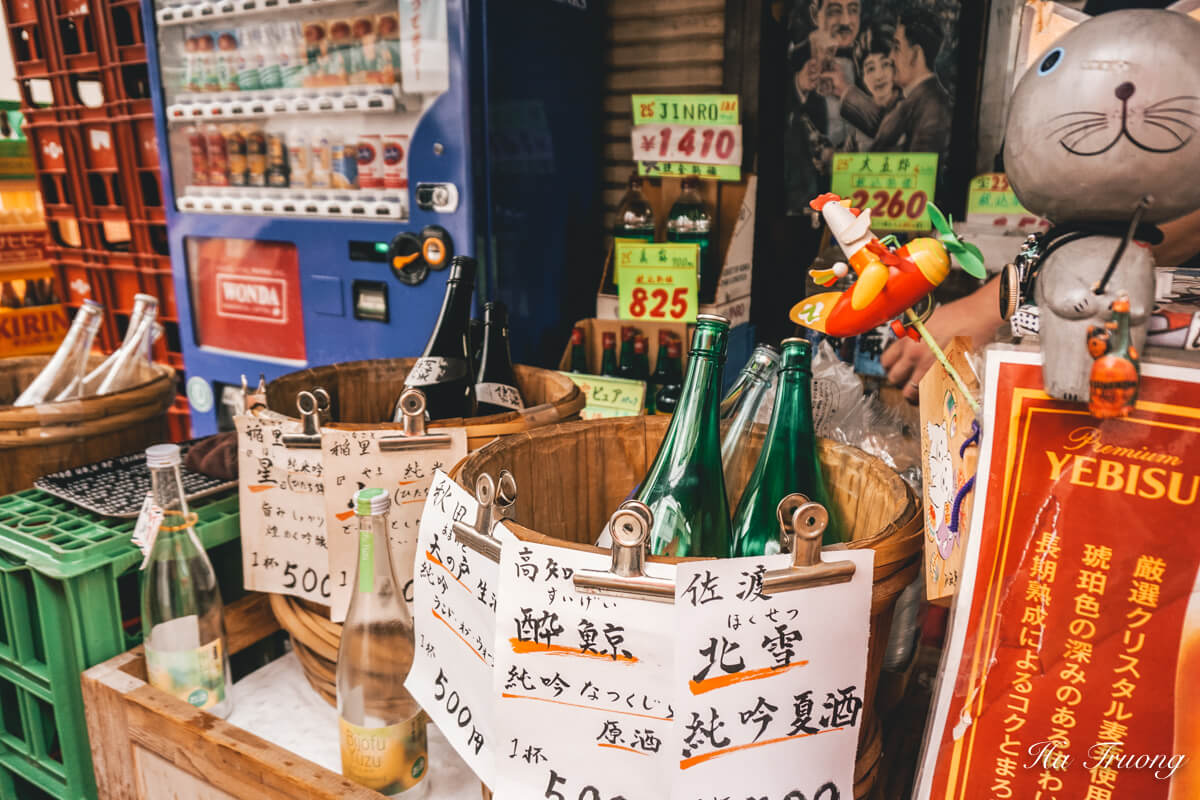

The lady owner was amiable and accommodating. She gave us lots of bottles to take selfies (haha!). Her shop has a long history, and it is popular in this area.
After trying the sake, we visited a small but stylish Knife shop before lunch.
A Kyushu-style Lunch

As Tokyo is home to more than 8 million people, many residents from different parts of Japan live here.
When they miss their hometown, they can visit shops and restaurants that sell local things from different regions.
These shops also help promote the specialties for tourism because “lots of Japanese travel for food,” said my tour guide.
The cafe was located neatly in the corner of a shop. There were a few simple choices, and I chose a pork dish for my lunch. A coffee with tea-taste was served when we finished our meal.


Have a Sweet Tooth
After finishing our lunch at the Cafe, we went to a Manju shop to try some sweets.
What is Manju?
Manju is the name of a traditional Japanese cake, and it is made from flour and rice powder with different fillings.
Manju is a steamed version of mochi, which has a different texture and taste.

>> Read more: Best Japanese food to try!
Tea Ceremony
Our last stop in this food tour was at Yuka-An Tea room – a lovely family-owned tea room located on the second floor of an antique store.
I highly recommend anyone who loves to understand more about the Japanese tea ceremony to visit here with or without the food tour.
One big difference between this tea room and traditional ones is that you can sit on the custom-made chairs instead of Tatami mats, so you don’t have to worry about hurting your knee participating in a Tea ceremony.
Also, the tea room’s design is smaller and does not have a hallway where guests can wait to enter.

After entering the tea room, we got a chance to choose our tea bowls, aged from 70 years to more than 400 years old.
All these antique ceramic bowls were from different countries and had different ages and meanings. The Tea Master then prepared the tea while we, the guest, were served homemade sweets.

We got a chance to try different types of tea after having sweets.
During the Tea ceremony, we learned about the meaning of the tea bowl and the decoration of the tea room.
Also, we received a hand-drawing piece of our tea bowl and the Tea ceremony explanation paper.

A walk around Yanaka
After participating in the Tea Ceremony, we finished our food tour with a stroll along with the Yanaka Cemetery.
It was a unique experience because, in my culture, people don’t usually walk inside the cemetery if it’s not needed.
Also, the Cemetery often scares me as well. However, I could see some people walking with their puppies or riding bicycles along the path.
The walking path was clean and spacious, and many tombs were nicely decorated. I was not sure if I would be brave enough to walk along this path at night, but it was not a problem with a group of people.
At the end of Yanaka Cemetery, we visited Tennoji Temple, established in 1274 during the Kamakura era (1185-1333), to enshrine Bishamonten – the god of warriors.
Also, I had a chance to observe a big Buddha statue on the left of the temple and wander around the temple a bit.

More thoughts on the Tokyo food tour
The tour went smoothly despite the heavy rain.
We had lots of fun trying different local street food with a nice Kyushu-style lunch before ending the traditional tea ceremony.
We also had a great time discovering different temples and shrines in the Yanaka district and learning about history while wandering around the area.
Even though it was not my first time in Tokyo, and I didn’t know about Yanaka until I joined the Arigato Japan food tour, so I was happy to join the tour and explore this area.
Do you want to know more about the tour? Check it here! You can also read reviews on Trip Advisor about Arigato Japan tours here.
As always, opinions are our own.
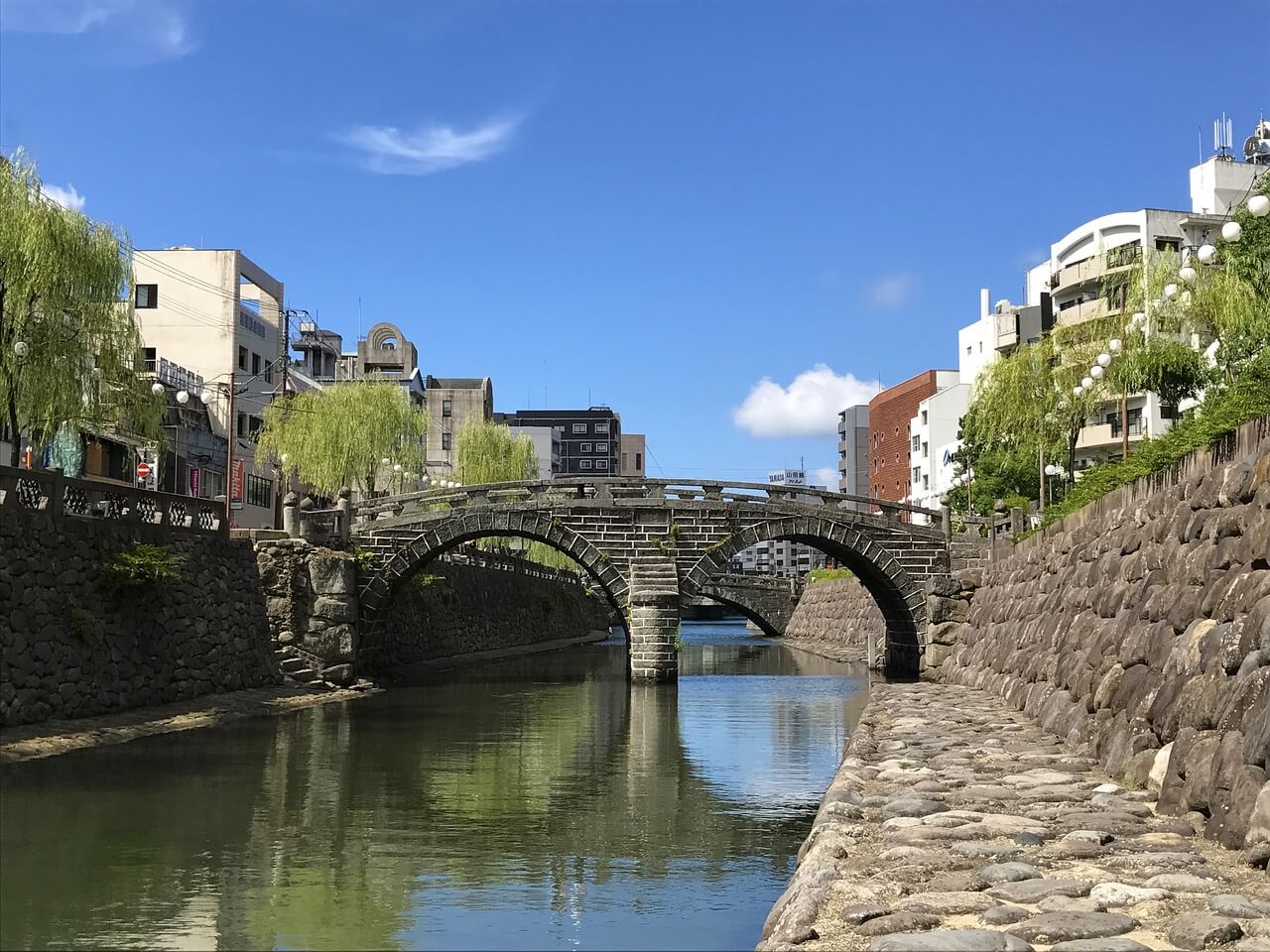
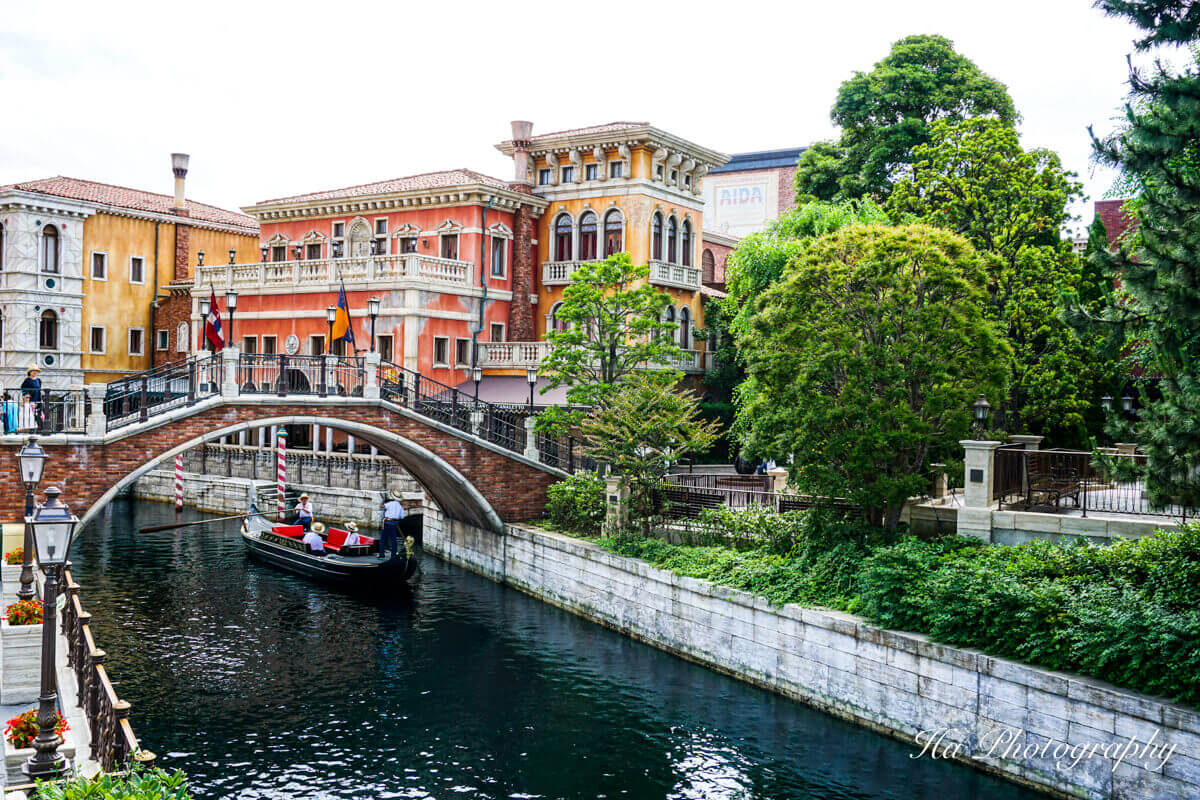

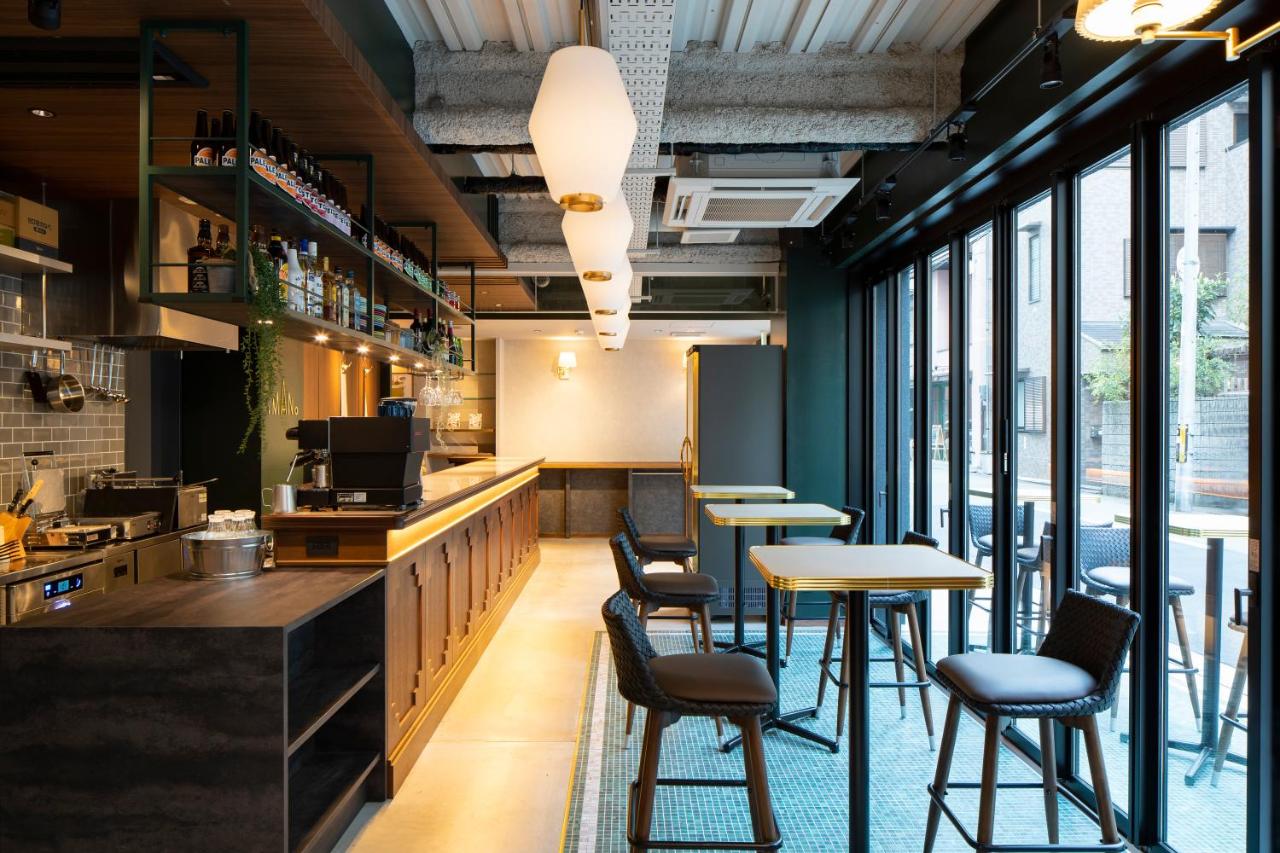
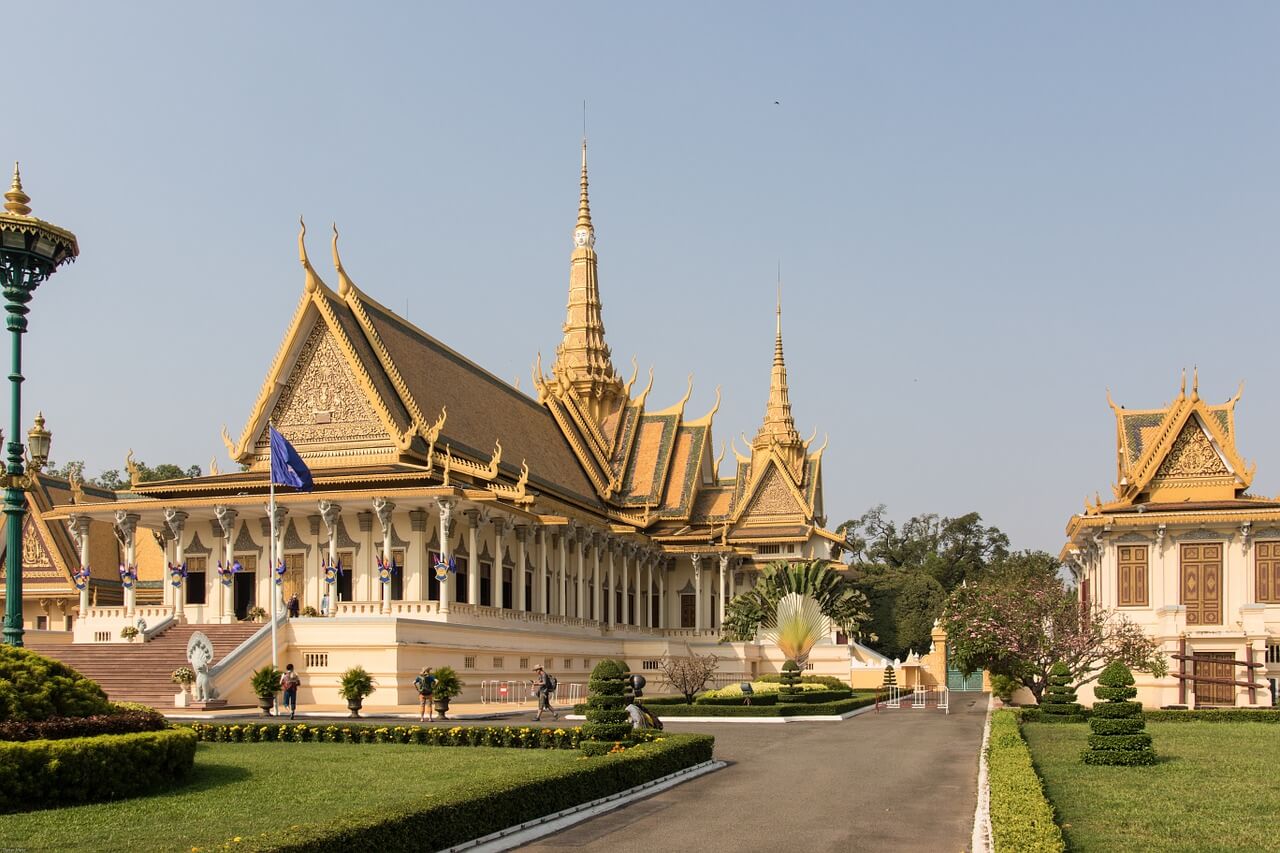

Yanaka looks so pretty, I want to go to Japan now!! I love Japanese too, so I’d be tasting all of these foods. My favourite has to be the cake and korroke. I’ve eaten plenty in good Japanese restaurants around the world; now I just need to eat some in Japan!
Trying Japanese food in Japan is the best for sure!
I really love food tours as a way to explore a new city. Sign me up for that cake place! And how lovely to participate in a tea ceremony!
I hope you’ll join this tour one day :)
The Tea ceremony looked really interesting to me. It is always nice to be part of some ritual which is being performed for centuries. Overall a great post. I always try local cuisines wherever I visit and it looks like Tokyo has a lot to offer.
Japan, or Tokyo in specific, has lots of tasty dishes to try :)
This looks great fun. I love foodie tours and I love Japanese food, not sure I could manage sake in the morning though lol. Hoping to get back to Japan next year and give this a go, thank you!
Haha. It was a bit strange for me to try Sake in the morning too, but it was a fun experience.
My brother is a big fan of anime, and yes, I’ve learned about that famous staircase through him. I haven’t really experienced any food tour anywhere yet. And you are right, the local food is a good way of learning about a certain place.
If you didn’t try any food tour, this one will be a great way to start!
This place is incredible! If you are adventurous to try new things, you can find a place that is awesome for you. Yanaka, included. You story makes me hungry.
Thank you, Blair. I’m glad that I could inspire you :)
Holy tastiness batman! Loved the flavours of the first bakery _ lemon cream, Oreo, and maple flavor, mmmm. Pleased to see you enjoyed the tea ceremony too, I tried one in Paris that was unforgettable.
You should definitely come to Japan to try the tea ceremony :)
I wish I read about this article before I made my way to Japan recently! Never heard of this district in Tokyo either! Would you suggest to stay in this district, or stay somewhere else? Will definitely keep this on the itinerary for the next trip to Tokyo!
I would suggest staying in Asakusa area if you love old town, or staying in Shibuya or Shinjuku if you love crazy Tokyo life.
Wow, your tour to Yanaka, an old town in Tokyo looks wonderful with full of unique cultural experiences. I loved those doodled artwork on old architectures. For me cake is flat but they are shaped like rolls or sausages here, it is so unique. Manju is a very common Indian name and I was not knowing that it is a name of type of dish in Japan.
I didn’t know that Manju is a common name in India! So interesting to know. This food tour was great. I learned and tried different dishes even though I lived in Japan for 3 years.
Excellent post! I love this area so much. And the place where you took the photo of the sake bottles is the most magical place ever!